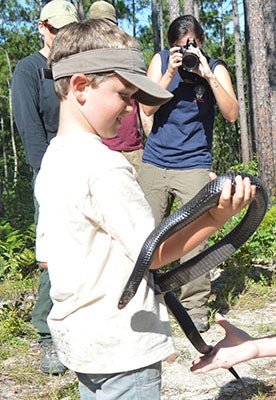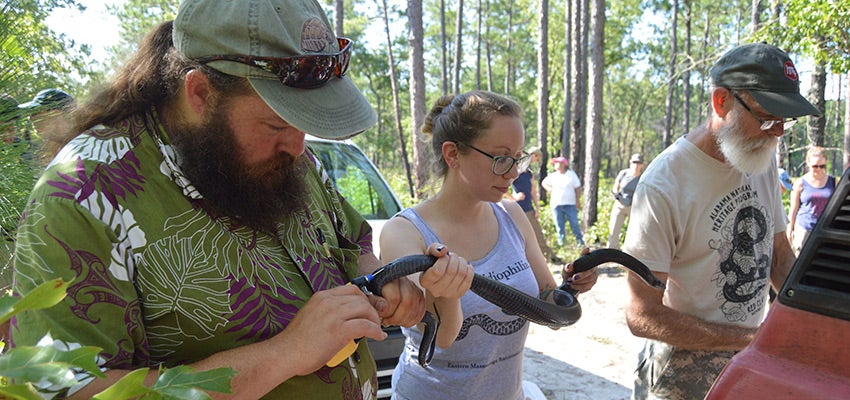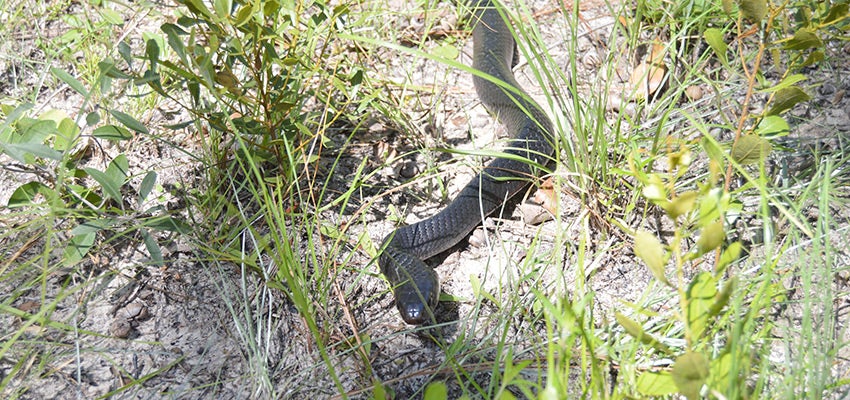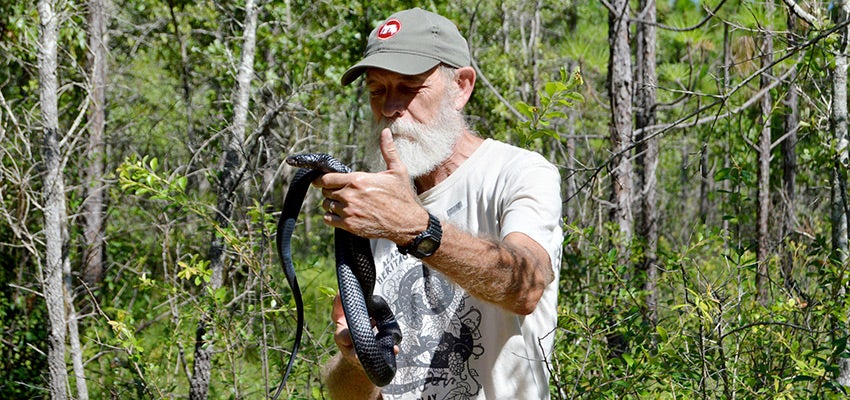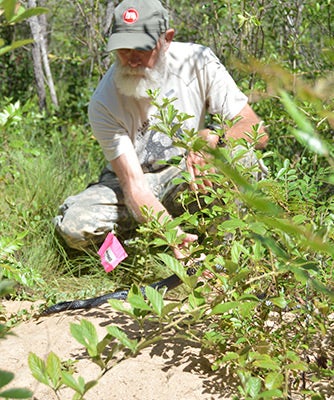SNAKES! [With gallery]
Published 12:52 am Saturday, July 15, 2017
Auburn University biologist along with Zoo Atlanta and Central Florida Zoo released around 30 Eastern Indigo snakes on the Conecuh National Forest on Friday morning as part of a restoration project to reintroduce the snakes to the area.
These snakes were bred at the Central Florida Zoo and then sent to Zoo Atlanta to grow for two to three years.
Both zoos along, with biologist from Auburn tagged the snakes before releasing them into gopher holes in the area.
The tags don’t transmit a GPS signal, and are only in place in case the biologist catches one in the wild some time down the road.
If caught, the snake is scanned for the tag and if found, the biologist knows that it’s a snake they introduced to area.
They are then able to take measurements and compare those to ones taken before the snake’s release in order to tell how they are doing.
The Conecuh National Forest is a large area, which biologist said makes it hard to track down the snakes in the future.
“It’s been a success in some ways,” Tim Mersmann, district ranger of the Conecuh, said. “While it’s hard to say if they snakes are thriving because they aren’t easy to find out here. We have had one found recently, but it wasn’t caught so we couldn’t scan him. He could have been one of the ones we have released in the past, or it could have been one that was born from the ones we released.”
The Eastern Indigo snake is native to the area, but there hasn’t been a wild one in the local area for almost 60 years.
The snakes are said to be the largest native species in North America and they feed off poisonous snakes such as rattlesnakes and copperheads.


